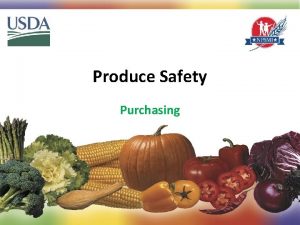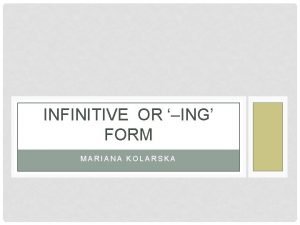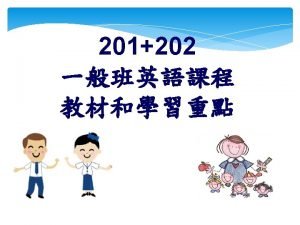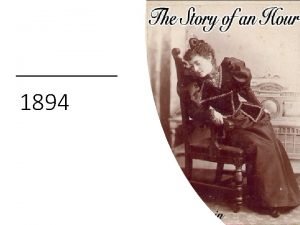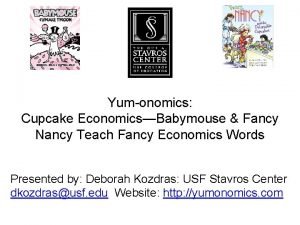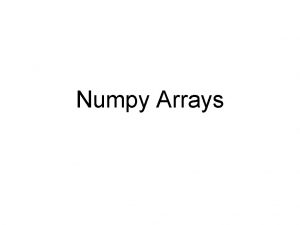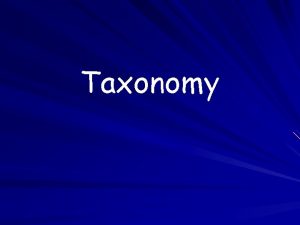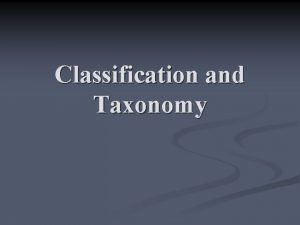Diversity of ecosystems Taxonomy Just a fancy word










- Slides: 10

Diversity of ecosystems

Taxonomy! • Just a fancy word for the classification of living organisms

A family tree is a form of taxonomy

Why do we classify living organisms? • Because there’s a lot of living organisms on the planet and we need to know what they are, what they do, what they eat, etc. . . • We need to know this information just in case one of these living organisms ever tries an uprising against the human race. • Well. . . actually the taxonomy of living things helps us understand the relationship between species.

Species • Living organisms that share similar characteristics belong to the same species. • Every species is given a scientific name (usually in Latin) • Before scientists classify a new species they must study its anatomy, behaviour, and fossil ancestors.

Living organisms (p. 218)

The plant kingdom (p. 219) • Plants produce their own food • They cannot move on their own • Divided into five classes : • • • - Algae: (no roots, stems or leaves/usually live in water) - Mosses & Liverworts: (no roots, have stems & leaves, no channels for sap, live on ground/attach to objects) - Ferns: (no flowers to reproduce, do not produce seeds/reproduce via spores) - Conifers: (no flowers to reproduce, produce naked seeds usually inside a cone) - Flowering plants: (reproduce via flowers, produce seeds inside a fruit) Ferns, conifers and flowering plants have roots, stems and leaves. They have channels for conducting sap.

The animal kingdom (p. 222) • Invertebrates (They have no internal skeleton) • They do not produce their own food • They feed on plants or other animals • They can usually move on their own • The invertebrate groups consists of some of the following: • • • - Sponges - Worms - Cnidarians : (jellyfish, corals, etc. . . ) - Mollusks : (snails, slugs, octopuses) - Echinoderms : (starfish, sea urchins, etc. . . ) -Arthropods: (spiders, insects, crustaceans)

The animal kingdom (cont. . . ) p. 223 • • • Vertebrates have an internal skeleton They can be cold blooded (body temp changes with the temp of the environment) - Fish( breath under water), Amphibians (breath under/out water), Reptiles (breath only out of water) • Or • • Warm blooded (body stays the same regardless of the environment) - Birds and Mammals

In class work! • P. 223 • Questions 1 to 8 (do not write down the questions) • Use full coherent sentences!
 Marzano and kendall taxonomy verbs
Marzano and kendall taxonomy verbs Why is genetic diversity important
Why is genetic diversity important Ecosystem jigsaw activity
Ecosystem jigsaw activity Describe the dream that romeo has just had
Describe the dream that romeo has just had Chapter 15 how to read literature like a professor
Chapter 15 how to read literature like a professor Do you fancy going for a drink
Do you fancy going for a drink Fancy face definition
Fancy face definition Us extra fancy
Us extra fancy Fancy ing or infinitive
Fancy ing or infinitive Fancy land
Fancy land Her fancy was running riot along those days ahead of her
Her fancy was running riot along those days ahead of her







